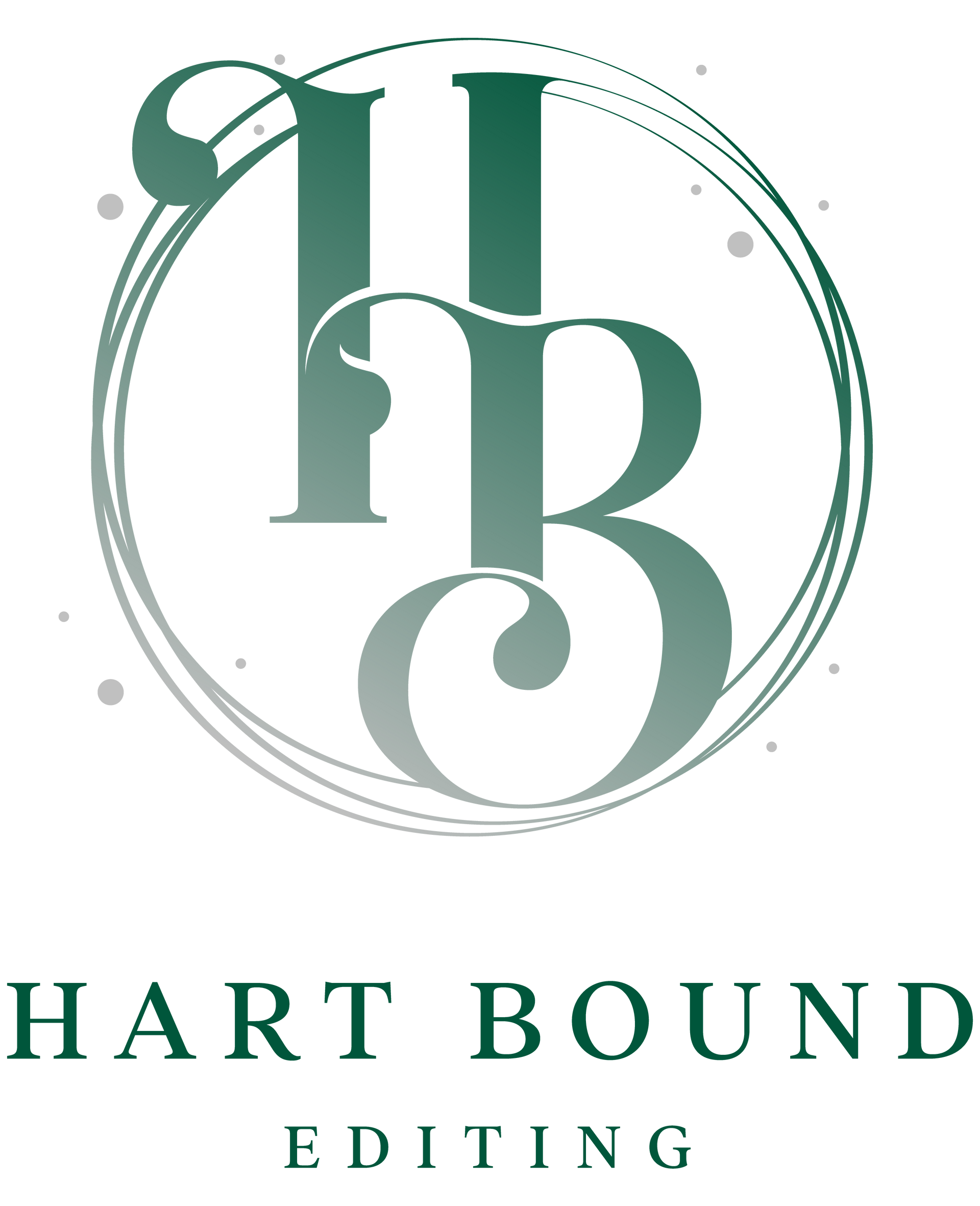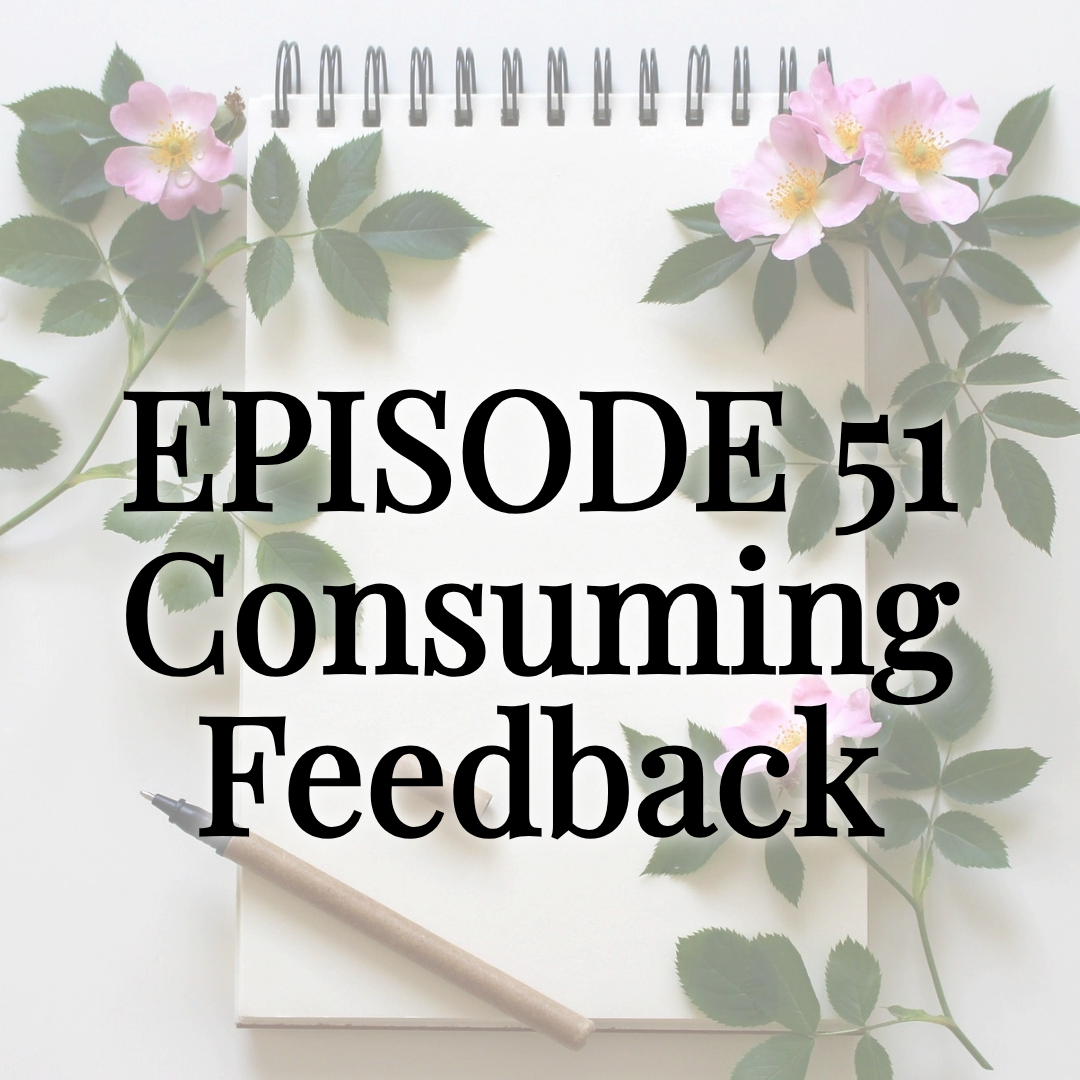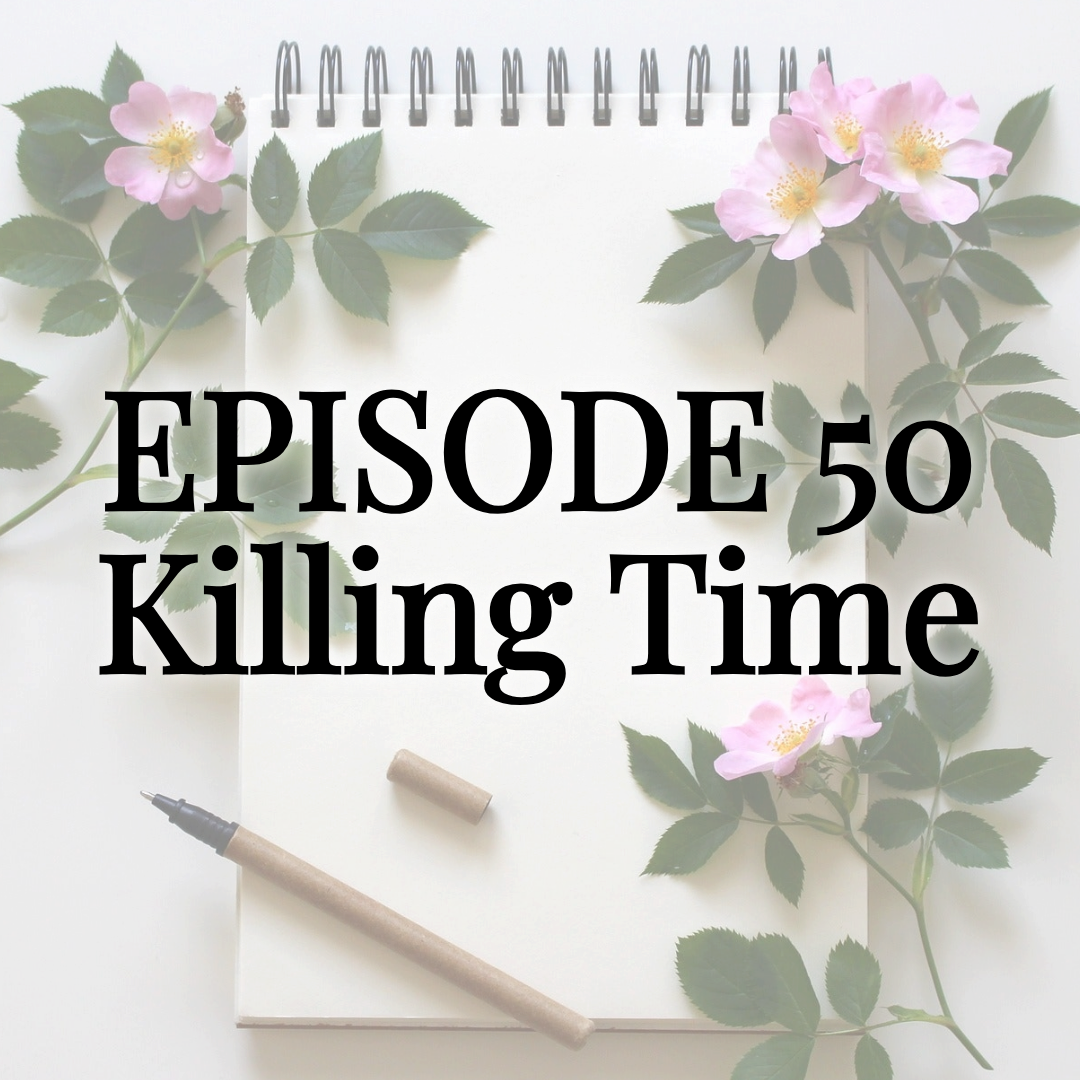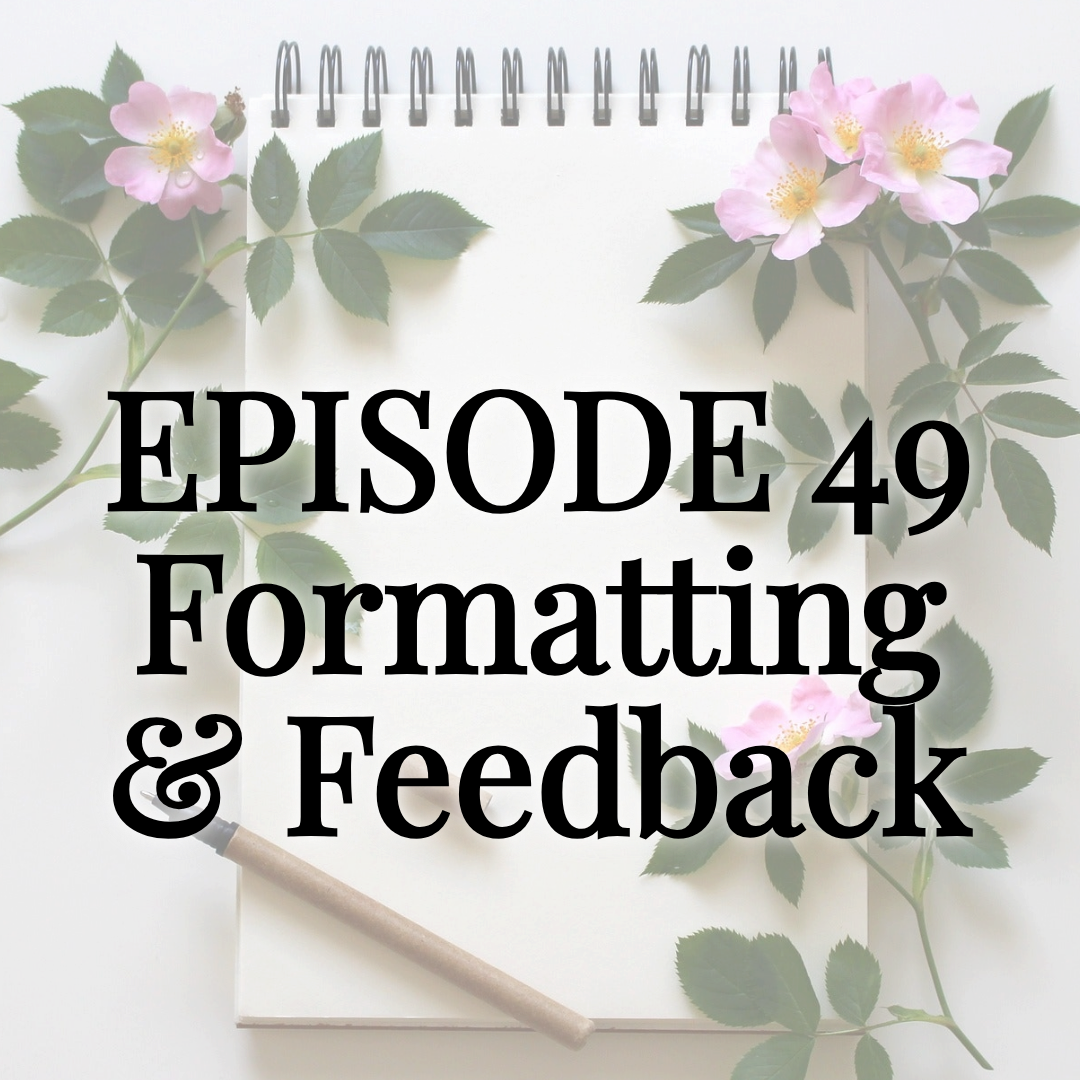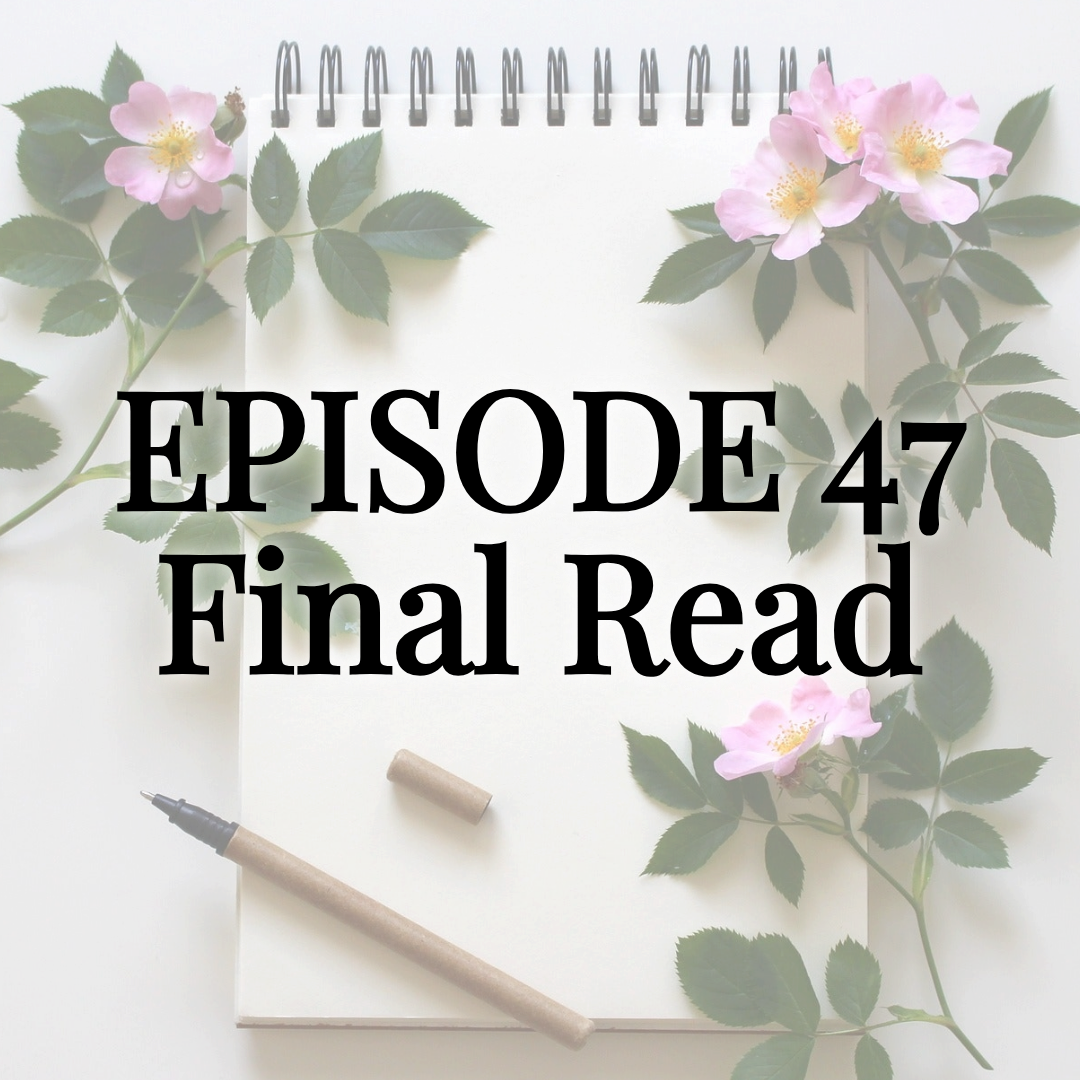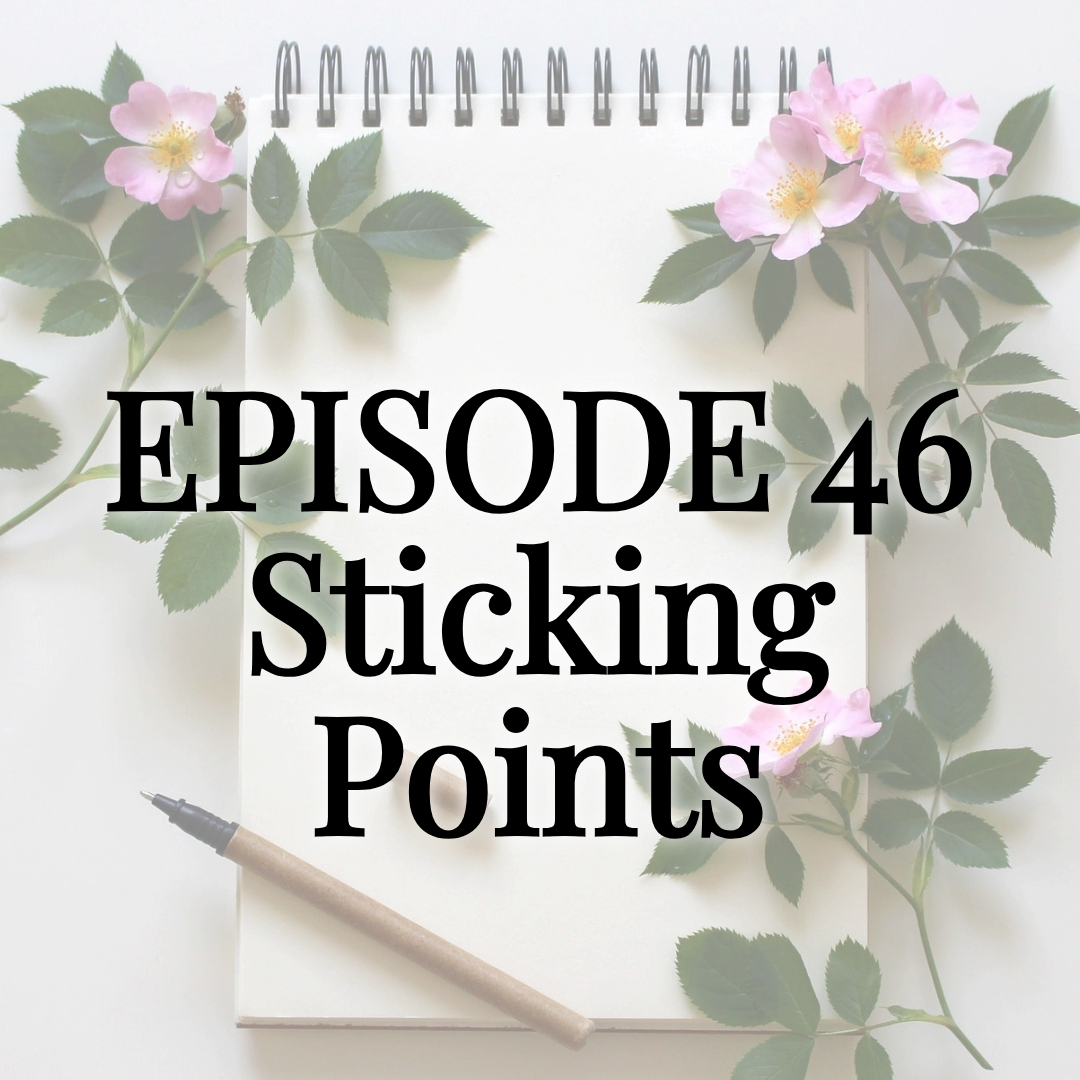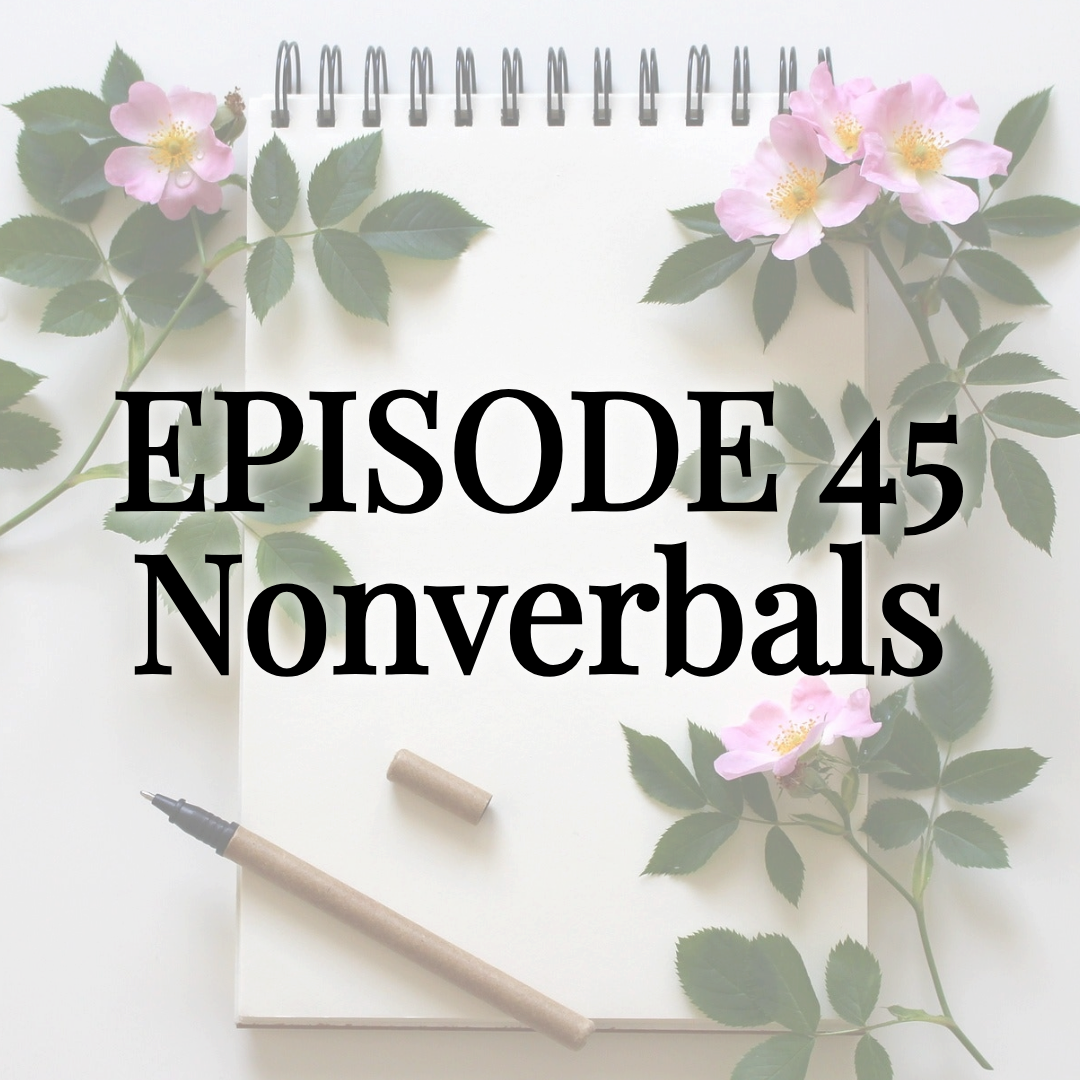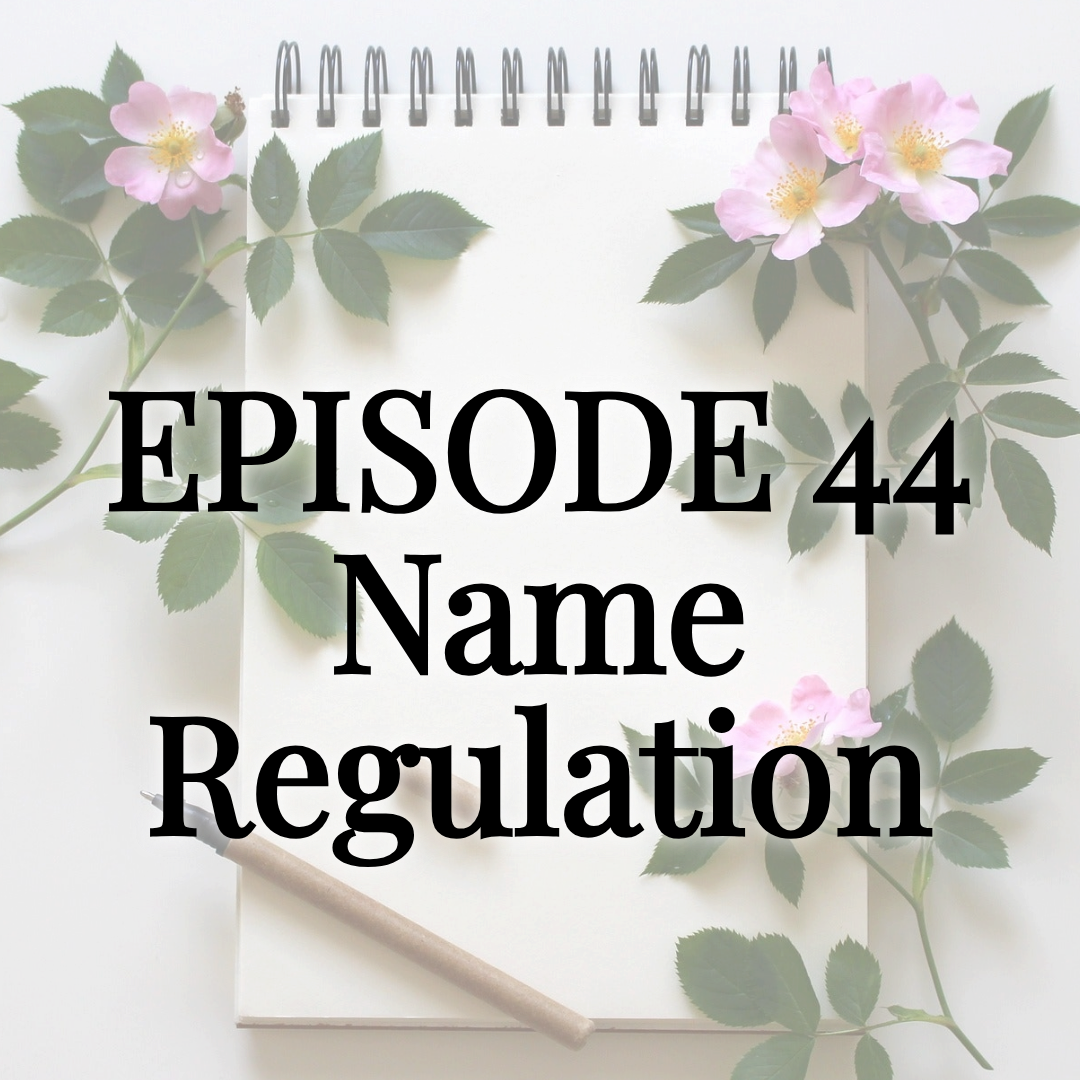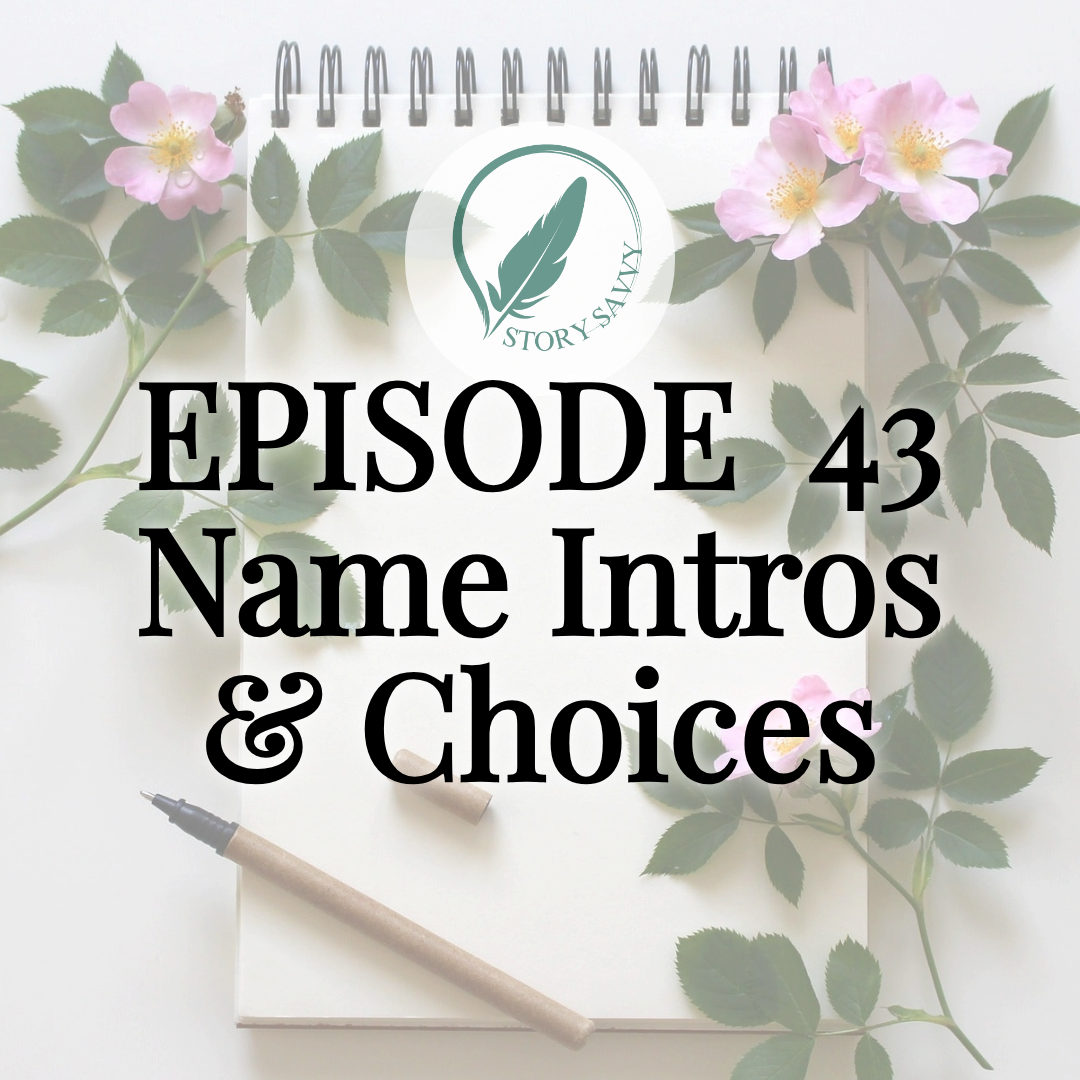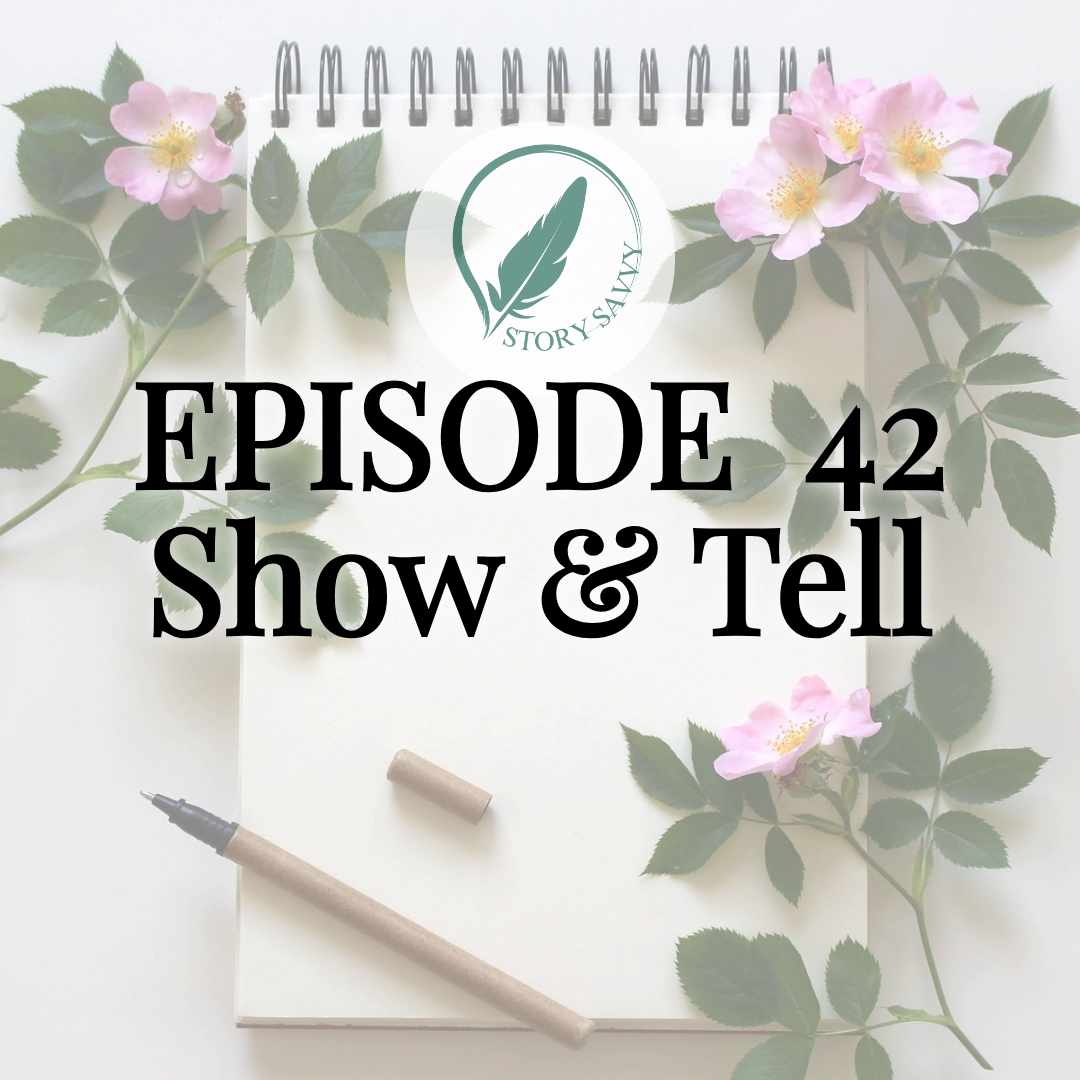Avoiding Scene Stagnation: Story Savvy Self-Editing Episode 31
Avoiding Scene Stagnation: After-episode thoughts, overview, and transcript...

Huge thanks to Addy DuLac for guest-hosting! Please do check out her charming and humorous interracial historical romance novels at www.addydulacauthor.net. I really appreciate her stepping in on short notice to cover for my usual co-host, Agnes Wolfe.
On the point of action/agency being something that can cause scene stagnation, I wanted to clarify what I mentioned briefly in the episode. First, stagnation due to too much pure action is by far the least common way a scene might become stagnant. Second, it really takes a specific kind of constant action to need to be addressed around this: boring actions that don't move the story forward in an interesting or purposeful manner. There can often be a lot of overlap between this issue and an overuse of description, but when I mention an overuse of action, I really do mean narrating each little thing the protagonist is doing, as blunt, shallow actions, without adding variety and interest of dialogue and depth-adding descriptions.
That being said, this is a situation in which I MUCH more strongly recommend cutting the fluff of uninteresting events, rather than trying to add interest to them. Always remember the tool: "Arrive as late as possible, leave as soon as you can" to make sure you are only ever spending words on actions and events your reader will find interesting and worthwhile.
If you are looking to expand your understanding of this episode, I suggest Episode 13: Pacing—Rises and Falls, and Episode 30: Scene Core Events!
Happy editing!
Episode 31 Overview:
Avoiding Scene Stagnation
"Are any of my scenes stagnant? Are my dialogue, descriptions, and events in balance? Am I keeping my characters in motion adequately, and is my protagonist interacting with their arena and other avatars in interesting ways in every scene?"
If you're looking for how to fix flat scenes or improve writing realistic character reactions, this episode of this podcast for fantasy authors delivers powerful tools for crafting character-driven scenes. Packed with writing tips for fiction authors, we explore scene core events, writing dialogue that flows, and how to balance dialogue and action for maximum story impact. Whether you're diving into fantasy novel editing, working on story structure and character roles, or seeking book editing for indie authors, this self-editing guide is for you. Learn more about writing strong story beats and elevate your draft with confidence.
In this podcast for fantasy authors, developmental editor Rebecca Hartwell and guest co-host Addy DuLac who is standing in for Agnes Wolfe with Authors’ Alcove dig into how to avoid scene stagnation and keep your story flowing. Published author Addy DuLac writes interracial historical romance with a bold mix of humor, high emotion, and just the right amount of spice in books like One Season with the Duke and her Troublemakers Trilogy.
Whether your dialogue is dragging, your description is overbearing, or your pacing feels off, this episode is packed with practical tips to help you bring energy and movement back into your chapters. Rebecca shares self-editing strategies for balancing dialogue, action, and description and explores how to identify stagnant scenes, fix them with targeted tools, and add variety that keeps your story compelling without sacrificing emotional depth or character agency.
In this Episode:
- What scene stagnation looks like and why it happens
- How to balance dialogue, action, and description
- Tools to diagnose and fix flat scenes
- Why emotion, agency, and conflict are essential
- How to use setting and POV shifts to revitalize a scene
- When to change location, add tension, or adjust pacing
- The difference between slow pacing and stagnation
- Why unique scene types and locations matter
Recommended Resources:
Read Addy DuLac’s books here:https://www.addydulacauthor.net/
Author’s Alcove Membership:authorsalcove.com
Fantasy Book Giveaway:authorsalcove.org
Chapters:
[00:00] Intro
[01:10] Meet Addy DuLac
[05:55] Understanding Scene Stagnation
[08:23] Common Mistakes in Scene Stagnation
[10:34] Identifying Slow-Paced vs. Stagnant Scenes
[14:01] Red Flags for Static Scenes
[15:38] Strategies to Combat Stagnation
[18:05] The Role of Point of View
[20:03] Choosing the Right Fix for Stagnation
[22:12] Maintaining Scene Variety
See you next week for episode 32: Intangible World-Building!
Episode 31 Transcript:
Avoiding Scene Stagnation
Rebecca Hartwell: Hello and welcome to the Hart Bound Editing Podcast. This is Episode 31 of the Story Savvy series, where we tackle the 52 biggest self-editing topics and tips to help you make your good story great as a published author, today Addy asks me, a developmental editor, all of the questions that you have wanted to.
My usual co-host, Agnes, and I have covered a bunch in this series so far, including last week's episode on the all-important topic of scene core events. Today, my temporary new co-host Addy and I are going to take a look at avoiding scene stagnation. By the end of this episode, you'll hopefully feel confident identifying where you may have a stagnant scene (or a part of a scene) and have some really solid tools in hand for adding variety, immersion, and interest.
Joining me to ask all of the questions is my friend and former critique partner, the author of One Season with the Duke—which is the one that I got to critique—and the Troublemakers trilogy, author Addy DuLac. Hello!
Addy DuLac: Hello! Nice to be here.
Rebecca: Yeah! Why don't you tell us a little bit about you and your writing and anything you'd like to share before we dive in with our first question here?
Addy: Oh, okay. Well, a little bit about my writing; I’ve been writing sort of unofficially since I was in the eighth grade, but I published my first novel, One Season with the Duke, in 2023, you know, during the Great Plague.
I grew up in Trinidad and Tobago. It’s a little island off the coast of Venezuela. The culture there is truly multicultural and truly multiethnic. Interracial couples are sort of the standard. You barely find anybody who’s just one ethnicity. Everybody is everything. And you can see it in their faces. You can hear it in their names. You’ll find somebody named like Arthur Gonzalez, and he’s, you know, Korean. And you’re just like, “okay, sure.” Right? That’s the kind of culture I grew up in.
So, my stories tend to follow that idea and delve into that example, and the difficulties people face when creating a couple that blends different racial identities, different cultures, different socioeconomic groups, all that kind of stuff.
So, a lot of the internal—at least some of the internal—tension is going to be there. And also, that ends up giving a lot of fodder for external tension, right? Because there’s a lot of stuff going on there. I’m also a student of history, so while I do take a little bit of creative license for the sake of the romance novel aesthetic, I do try to stay true to the reality of the racial demographics of Europe and the UK between the 18th and 19th centuries, because that’s the area and time in which I generally write.
So, if it’s legally or theoretically possible based on a historical fact, then it’s probably going to be in there. The fact is, there was a lot of racial mixing going on. Right? England had conquered half the globe, if not the whole damn thing. And so, they’re either pulling these ethnicities into England proper, or their army is going out into these places. These military men are marrying and having these children, and they’re bringing them in, right?
And we all know the second or third-born sons are probably going into the military. So, if enough people die, you could end up with a mixed-race baron coming in and you’re just like, “what is happening?” That’s what happens.
Writing-wise, I think I’m traditionally called a plantser, where you’re combining plotting and pantsing. I need a strong framework from which to begin writing. I find it very difficult to organize my thoughts if I don’t have some kind of a framework to work from. And I always have a pretty good idea of my characters and an idea of the backstory or stories that I’d like to use them for. So normally I need a framework to organize that, and then I start writing and let the story take me wherever it’s going to go, right? I let the characters live their lives and I’m just sort of catching up with my middle fingers.
I love writing—I like a little bit of comedy, but I also love a lot of drama and romance. I love hurting people’s feelings when I’m writing. I like high emotional stakes, and I am pro third-act breakups. I will not be taking any feedback on this, when they are appropriate. I love me a third-act breakup.
And also, I like beta males better than alpha males. I find alpha males very annoying, both in real life and generally in stories. So, my males tend toward, you know, the nurturing type. That’s what I like to write.
Rebecca: Very nice.
Addy: That’s me. So, Rebecca, what is scene stagnation and why is it a problem?
Rebecca: Scene stagnation is when a whole scene, or part of it, or a specific aspect of it, isn’t moving, or is just too much of the same thing going on, and on, and on. This is a problem because you really don’t want your readers to just sort of space out while they’re reading, or listening to it as an audiobook.
I was thinking about this in the car the other day. I was listening to an audiobook and there was a whole scene where I realized I wasn’t even thinking about what I was listening to, because there wasn’t enough happening in the scene to hold my interest.
This is also a problem because it can make it harder to deliver a core event, like I talked about in the last episode. If you are trying to deliver a core event of—I’ll go back to that same example I used there of—“alright well my female main character is realizing her husband has been sabotaging her career,” and the whole scene apart from that sentence is really boring, that moment isn’t going to land.
Addy: So how is this different from the topic of pacing, and why are we talking about it again here at this stage of the process?
Rebecca: Sure. It is very much related to pacing. However, scene stagnation has nothing to do with intensity of a scene and a lot more to do with these smaller scale choices, like having the characters move around the setting, or adding and removing dialogue, and that sort of thing.
I wanted to wait until now in the series to talk about this because pacing is a bigger issue which needs to be addressed while looking at how scenes move into and out of each other, and looking at the patterns of intensity across sequences of scenes. And need to be looked at in the context of stakes and genre and other big considerations.
Scene stagnation, on the other hand, is very much a scene-by-scene check that only matters within a compartmentalized scene. And doesn’t need to be connected in any of those bigger ways to genre or stakes.
Addy: As an editor, what are some common mistakes around scene stagnation that you see in other people’s work?
Rebecca: It usually comes down to missing the right balance between the aspects of dialogue, description, and agency—or action, if you want to look at it that way. So, the common mistakes are:
· Talking heads, where it’s just dialogue. You've got a page or more of just, *dialogue* she said, *dialogue* he asked, *dialogue* she intoned. Whatever, you know, markers you’re using. If it’s just pages of dialogue and you could imagine it playing out as just these two heads talking to each other with nothing actually happening around them, that’s a stagnation issue.
· On the description point, if you’re describing a lot of things that don’t matter to the story that’s playing out and don’t move that story forward, if you’re doing those descriptions in too much depth or length, that’s another stagnation issue.
· And then on the agency side, I’ve pretty much already said it, but it’s when you don’t have things happening. Or, you have everything happening and no one is talking about it, nobody is thinking about it, or processing, or trying to affect it.
So, these all need to be kept in balance.
And then these flags can also look like:
· A lack of emotion, to any degree, in a scene. If it’s just really emotionally flat and no one feeling, or showing, or expressing any emotions.
· It can also look like a lack of goals, motive, or conflict in play. You really do need to have something pushing them forward, pulling them forward, or causing hurdles in that momentum.
· And then lastly, one of the red flags I’ve seen in work that I’ve worked on is that nothing really changes from the beginning to the end. And that very much goes back to the last episode on core scene events.
Addy: What is the difference between a slow-paced scene and a stagnant scene? Is there a difference?
Rebecca: There’s definitely overlap, like I mentioned earlier. A slow-paced scene is low-stakes and low-emotion, like we talked about back in Episode 13 on this topic. A stagnant scene is one that lacks surface-level interest, missing that balance between dialogue, description, and things being done. So, there’s not much difference, but again, pacing looks at the scene wholistically within the highs and lows of your whole book, and your general tension—what’s the word I’m looking for? —Goldilocks zone. Stagnation just cares about each page, or paragraph, or scene one at a time.
Addy: Where’s the line between just a style choice and stagnation on these points you listed earlier? For example, speaking specifically to that “talking heads” one, what would be classified as just a dialogue-heavy scene versus where does it cross the line into talking heads?
Rebecca: This can be very subjective, and something you kind of need to just feel out. But the tool I’ve given clients in the past is: think about imagination cooldown.
So, when you are given a visual description of a character, or the room that they are doing things in, you have the strongest visual of that in the moment that it is being described. And then over the following seconds or minutes, that starts fading out as other things come to the forefront of that imagination. So try to keep enough of those descriptions and actions involved so that the readers keep their sense of who is speaking, and where, and under what conditions often enough that it doesn’t have a chance to fade completely to black.
So, dialogue-heavy scenes still need to have a backdrop of things happening. And vice-versa: if you have a very descriptive scene, you still need to have some dialogue to let those descriptions have context in the story being told. I hope that makes sense.
Addy: Sometimes when you have a dialogue-heavy scene, if it’s a talking heads situation, when it starts off it can just be showing how fast the dialogue is going back and forth. Because a lot of times if you’re trying to show they’re just bouncing back and forth off each other you don’t have time—it’s not going to be believable that the character is taking all this time to build all these things. It’s like “no, respond.” But you can’t do that for a whole page. Right? So maybe every three or four exchanges, and then you’re like okay, now somebody needs to describe something. Or someone needs to do something with their face, or something.
Rebecca: Yeah. And give the visuals first. So, set things up, and then do some back-and-forths, and then give it a line of refreshing those visuals. Refreshing that interaction with the setting. And then like you said: do another half-page of the snappy back-and-forth. It’s all about keeping that mix, and that variety.
Addy: What are some red flags we should look out for in our own work that may suggest it’s stagnant?
Rebecca: Oh boy. So, hopefully I’ve already given listeners some things to watch out for. But, running through a bit of a list to answer that:
· It’s a red flag if most of a page is all dialogue with no movement, no actions, anything like that.
· It’s a red flag if there’s a lack of goals, motives, or conflicts in play. If you can’t point to any goals, motives, or conflict in a scene, it probably has some level of stagnation worth addressing.
· It’s a red flag if dialogue or description with minimal action is more than two-thirds of a page or a scene. Again, balance. And two-thirds of one things tends to be that outward cusp for things feeling stagnant.
· It’s a red flag if you had flagged a given scene as incredibly low-intensity back when we were talking about pacing, and you weren’t sure how to fix that. Maybe now revisit that with this toolkit and see if that can help.
· And then lastly and as always, if you get a critique partner or beta reader, anything like that, and get feedback on a scene or a chapter that says something like: “This felt really slow,” or “Man, my interest really fell away,” “This really didn’t hold my interest,” “Why did you include this scene?”—anything like that, that’s good feedback that you should pay attention to and go in and see if there are surface-level changes like these that you can make to fix that.
Addy: If a scene is stagnant, how can we fix that?
Rebecca: It really depends on what the kind of stagnation is. So, first you need to name that, and then you can go on from there.
· Replace thoughts and narration with dialogue if you think you’re just really, really heavy on descriptions and nothing much is happening. Forcing lines to simply get said out loud can help with that surface-level interest.
· You can also try changing the setting of the scene to force actions and interactions. This is probably the one that I end up recommending the most, and that I make good use of in my own books. If a scene is stagnant, move it outdoors. Chane it from home to work. Change it from a quiet, private location to a loud, very public one. If you just change where this scene is taking place, that can do a lot of good to that stagnation issue.
· You can also try adding in other characters to create conflict. If it’s currently stagnant as a conversation between, you know, the two lovers, toss the antagonist in the mix and see how that changes things. That will do a lot.
· You can also try slimming down dialogue, like we were talking about, if you have that ‘talking heads’ situation. Or introduce a reason like a time constraint or them being overheard to force them to much more concise and try to get their ideas across in much fewer words.
· A couple other thoughts here are just: make something go wrong, or harder to do. I know I’ve talked about this in the past; it helps with stagnation, too.
· And then lastly, make the protagonist and the others with their setting more. So instead of just picking “I’m going to make this setting”—let’s say, a busy library—make them take books off the shelves. And try to use the Dewey Decimal system. And try to find somewhere to sit and be frustrated because their knee hurts and then find somewhere to sit on the floor. And then the librarian yells at them. Make them interact with these other aspects that aren’t just dialogue and that can really help with stagnation.
Addy: When it comes to stagnation, can it also be like when you’ve been in one person’s POV for too long? Like if you do dual POV? I feel like sometimes that can also be a thing where it’s like, this person doesn’t really have—like internally their dialogue—first of all it’s been missing. But also, you would know where they are. So, there’s not as much to know about their perspective. Whereas you may have the other person who’s in the scene, and it’s like, we haven’t seen them for a minute, and maybe because we haven’t seen them, there could be more going on. There’s more to explore, there’s more to catch people up on. And it could kind of shock it out of going for three chapters where it’s like, maybe switch it over. You know? What do you think of that?
Rebecca: I think you have a good point there. I think you definitely have a point. But I think that the other ways that I’ve looked at POV in this scene (correction: series) such as looking at who has the most at stake, looking at agency, looking at those kind of things need to take precedence. So, I’m not sure that I’d say that it’s a problem to have three—maybe four at a stretch—POV scenes in a row from the same protagonist. However, if it’s an option, and you’re not going to mess up those other, more important, factors by deciding to rearrange scene so that you’re doing more of an alternation, that can help. I would say that it’s not an issue (within reason), but it is a tool that you can use if you’re not screwing up the “is this the right POV for this scene” kind of things.
Addy: Right. So, how can you tell or decide which option for adding interest from that list you just gave us is the right choice? And you touched on that a little bit, but tell us more.
Rebecca: Yes. So, to answer a little more specifically, again, you really need to name the problem first. And then if you really want to sit down and do this as an exercise, I recommend naming the problem and then naming what the positive desire opposite of that would be.
So maybe you name the problem is: talking heads. And then the alternate version of that which you want to write down is something along the lines of: well-balanced with action and dialogue. Or: dialogue is happening around something interesting happening.
So, once you have those two statements, you can just make the call right there. If the answer is “I need to slim down dialogue,” great, No further (brainstorming) work needed.
But if you’re still not sure, you can just sit with that for a second and imagine how each of the optional fixes that I listed earlier would change the scene, and how that scene transitions into the next. Sometime when you do that, you’ll think through and be like: “okay, well, I currently have the talking heads problem. What if I just slimmed down all of the dialogue to a quarter as much spoken words as it currently is. Okay, well that would produce issues. I wouldn’t be able to deliver all of the information that I need to, the conversation would feel unnaturally short, and it would make the overall chapter too short to fit in with the flow of the story. Alright, that’s not the right option. So let’s imagine through if I changed the setting so that they’re forced to do more around the dialogue? Okay, well, thinking through that, that’s not going to make the scene too much longer, I only have to add 300 words. And I can still do a little bit of (dialogue) slimming, but I don’t have to lose any of the important information. And then when I transition into the next scene, it’s going to feel even better because they’re already in that part of town by changing the setting. Okay, then that’s the right answer.”
And then lastly for deciding how you want to fix a stagnant scene, just save your current version of this scene because again, I always recommend just “I’m going to put this over here in another document so it’s not lost and I can revert if I need to,” and try applying a change and see if you like it. Or if you don’t like it, or if you need to combine it with a different solution and play with that.
Addy: I know we need to wrap up, but I do want to ask one last question: if we make all of our scenes interesting, doesn’t that risk them all feeling the same? Which goes against what you were suggesting back in Episode 13 on pacing?
Rebecca: Yes and no. The tip here—and this is one that I picked up from Story Grid and then interpreted heavily, so take that with a grain of salt—but it’s this idea of scene type variety.
And I talked about this a little bit in the last episode, where the point of naming that core event was also making sure that they’re all unique within the scope of that story. So, if you have multiple scene with the core event of “they have a revealing conversation in a library,” then those aren’t unique core events and you need to change at least one of them so that they are all unique. And the way that I personally track this in my books—and I have done for clients when this was a big problem in their books—was just in whatever list of chapter names you have, put a little note next to them about the location—so that could be “oh this is home , restaurant, buss, things like that—and then put another, more descriptive single word with it like this is a conversation scene. This is a fight scene. This is an argument scene. This is a self-reflection scene. And check those for variety.
Because a self-reflection scene is going to probably have more description, maybe some action, less dialogue. An argument scene is going to be heavy in dialogue, but (ideally) still be balanced with some action and that tension and conflict.
So as long as you have variety in those locations and if you would describe them as contemplative, fighting, moving forward, stumbling backwards, those kinds of things, you should be all set in having enough variety that the reader isn’t going to feel like it’s getting repetitive.
Addy: That comes into—I write historical romance, and in historical romance it’s like everything happens in a ballroom. And it’s just like, everything can’t happen in a ballroom. Like, let them go somewhere else for once in their life, right?
Rebecca: Right! But even then, if you have five scene that are set at balls or in ballrooms, one of those can be self-reflective, one of those can be argumentative, one of those can be very, very flirty. You can have variety in the combinations, even if you have multiple scenes in the same setting, or with the same type.
Addy: Or like, in different—because, I mean, a ball—there could be a dinner portion, they could be in the yard, the garden, right? They’re dancing, maybe she’s just in the refreshments room like, they can just be in different spots. Like you can’t have it where every five minutes, somebody’s in a waltz, right? Even though it does make it easier!
Thank you so much. This has been fantastic.
Rebecca: Awesome. I look forward to doing a couple more episodes with you.
Next week, you and I will go over the often-overlooked aspects of intangible worldbuilding, especially for fantasy and historical fiction.
For now, I would really like to thank everyone who follows along with this series. We’d appreciate it if you could help us out by liking and subscribing to the Hart Bound Editing Podcast and the Authors’ Alcove Podcast, where you can find lots more content for fantasy and historical authors and readers beyond this joint series.
I also very highly encourage you to check out Addy’s awesome interracial historical romance books at addydulacauthor.net—that’s A-D-D-Y-D-U-L-A-C-A-U-T-T-O-R dot net—and follow her on Facebook, Twitter, and Instagram @Addydulac_author. Thank you again.
Addy: Thank you for having me on.
Rebecca: Thank you so much for listening to the Hart Bound Editing Podcast. I look forward to bringing you more content to help you make your good story great so it can change lives and change your world. Follow along to hear more or visit my website, linked in the description, to learn how I can help you and your story to flourish.
See you next time!
